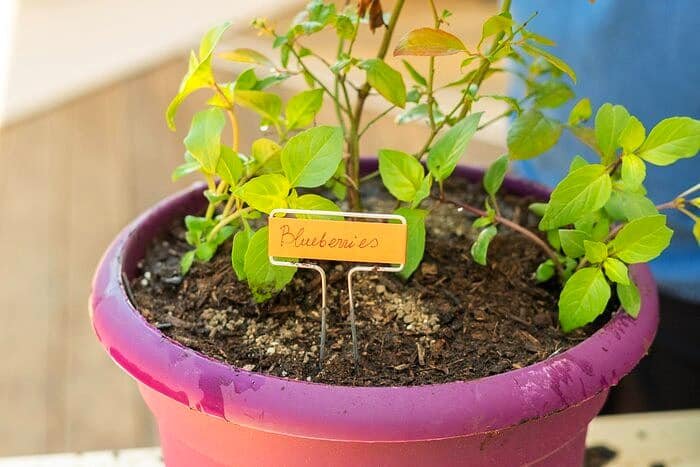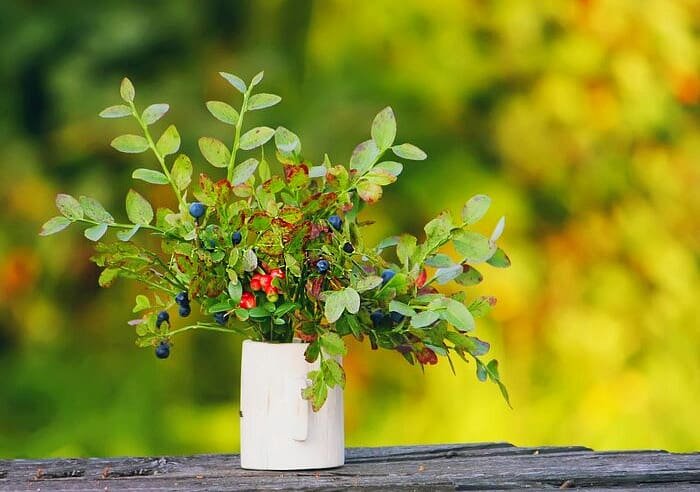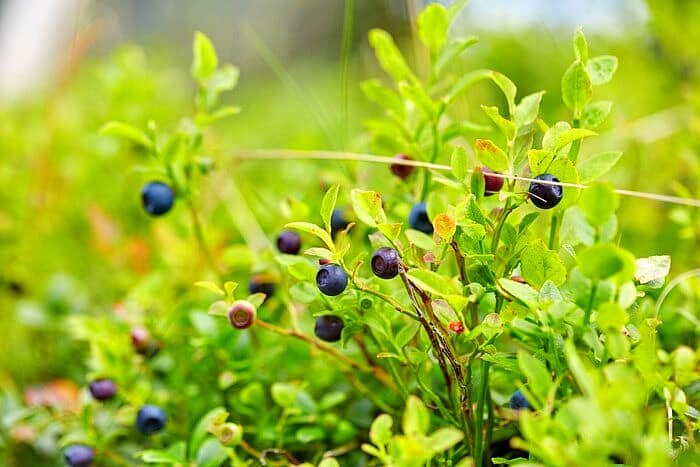Planting GuideBlueberriesIn Pots and Care Conditions
Growing blueberries in a pot is easy and straightforward. You just need to have enough space to grow this antioxidant-rich plant; but the question arises: how should blueberries be grown in pots? In this section ofSelMagzwe will provide a detailed explanation.
Guide toPlanting Blueberriesat Home
Follow these steps for planting blueberries:
- Blueberry seedlings and seeds need stratification and chilling to sprout. The seeds available in stores have been chilled and are ready for planting, but some may not have undergone sufficient stratification. After obtaining the seeds, place them in the refrigerator for about 30 days at a temperature of approximately 5 degrees Celsius.
- For this, you can either place the seeds dry in the refrigerator or soak them in water, then place them between several layers of clean, damp paper towels in the refrigerator. If you don’t soak the seeds, soak them for 24 hours in water before planting in soil.
- In your pot or seed tray, add acidic soil as blueberries require acidic soil for growth and sprouting.
- Water the soil so that it settles.
- Place the seeds on the soil surface.
- Add a thin layer of peat moss over them, just enough to cover them so they won’t suffocate.
- Spray water on the soil surface to moisten it.
- Cover the planting bed with clear plastic to increase soil moisture.
- Do not place the planting container in direct sunlight but in a brightly lit space at a temperature between 15 to 22 degrees Celsius.
- The surface of the soil should not dry out at all before sprouting, so if you feel the moisture under the plastic has decreased, spray water on the soil again.
- After sprouting, water the plant twice a week, but avoid waterlogging and ensure the base of the plants does not dry out.
- After sprouting starts, increase the sunlight exposure because the plant needs 6 to 7 hours of direct sunlight.
- If you plan to sow blueberry seeds indoors, use grow lights or fluorescent lights positioned less than 50 centimeters above the planting bed and use them for 10 to 13 hours daily.
- Blueberries are sensitive to extreme heat and sunlight, so in summer, protect the plant with a shade cover.
- In winter, when the plant is dormant, reduce the branch density of the blueberries to promote lateral growth and fruiting.
- Remove early blossoms on blueberries to stabilize the root system and focus growth on the branches in winter before spring.
- Blueberries are sensitive to fertilization and should be fertilized with a very low dose of mild fertilizers after 1 to 3 months.
- Producing blueberries from seeds takes 2 to 3 years.
- The growth of the plant in the first year is slow and it may not exceed a height of 15 to 20 centimeters.
- To maintain soil moisture and prevent weed growth around blueberry bushes, add wood chips,rice husks, sawdust, straw, etc., to a height of 5 centimeters.
- Use rainwater for irrigation as it has a lower pH compared to normal water; however, if you don’t have access to rainwater, you can use distilled water.

The Best Season for Planting Blueberries
If you are wondering when to plant blueberries, it is best to plant blueberries in pots in spring or late autumn. If you live in very cold regions, you should wait until mid-spring.
Necessary and Suitable Conditions for Planting Blueberries
Like any other plant and fruit, blueberries also require conditions for better growth, which you will read about next.
Choosing the Right Place
It is advisable to move your pot after planting blueberries and ensure that your plant receives enough light.
Care for Indoor Blueberries
Birds love blueberries, and the best way to protect these fruits is to fence around them. This way, birds won’t approach them for at least the first few weeks until the blueberries have ripened, allowing you to harvest them.
Proper Light
Blueberries need 6 to 8 hours of sunlight a day;therefore, it is crucial for them to receive this amount of light. You can even place the plant directly in the sunlight on a normal day, but if you live in an area that is too hot and sunny, be careful not to let the plant overheat.Suitable Soil

The blueberry plant thrives in acidic soil. In fact, the pH level should be between 4 and 4.8 so that it can absorb water and nutrients and produce fruits. Since garden soil typically does not have acidic properties, it needs to be controlled. You can purchase special blueberry soil that has a suitable acidity level.
It is better to fill two-thirds of the pot with regular soil, adding some mixed soil to achieve the acidity suitable for blueberries. The blueberry plant has shallow roots which dry out quickly, thus requiring plenty of water, but the soil should also contain sand. Additionally, the soil must have good drainage, as the plant should not remain submerged in water. On the other hand, the soil surface should remain slightly moist.
Proper Watering
Even when it rains, do not stop your watering schedule. The leaves of the blueberry plant resemble umbrellas and prevent water from reaching the base; therefore, always check the soil with your finger to see if it is moist. If you cannot water your plant for a week or more, place it indoors in a relatively shaded area to prevent excessive evaporation and loss of moisture.
Temperature and Humidity
Especially in the cold winter season, place the blueberry pot under a roof; blueberries do not like to be in very dry conditions and do not enjoy very cold wind and weather, as it can cause them harm.
Suitable Fertilizer
The blueberry plant does not require a lot of fertilizer; just a small amount of regular fertilizer in early spring is sufficient.
Alongside Other Plants

When you decide to choose blueberries, understand that this plant needs companions to produce fruits. You should have at least two other fruit plants nearby; so try to place a few other plants close to your blueberry.
Pruning
Sometimes the branches and leaves of the blueberry plant grow too large and therefore need pruning; however, pruning may be necessary in the fourth year after planting it in pots. After this time, you can prune the plant to stimulate its growth.
Planting Blueberries







